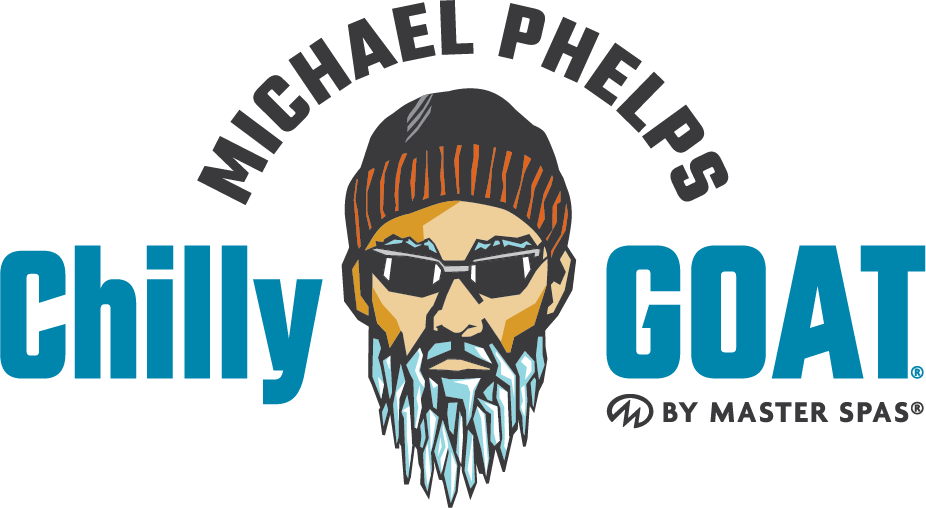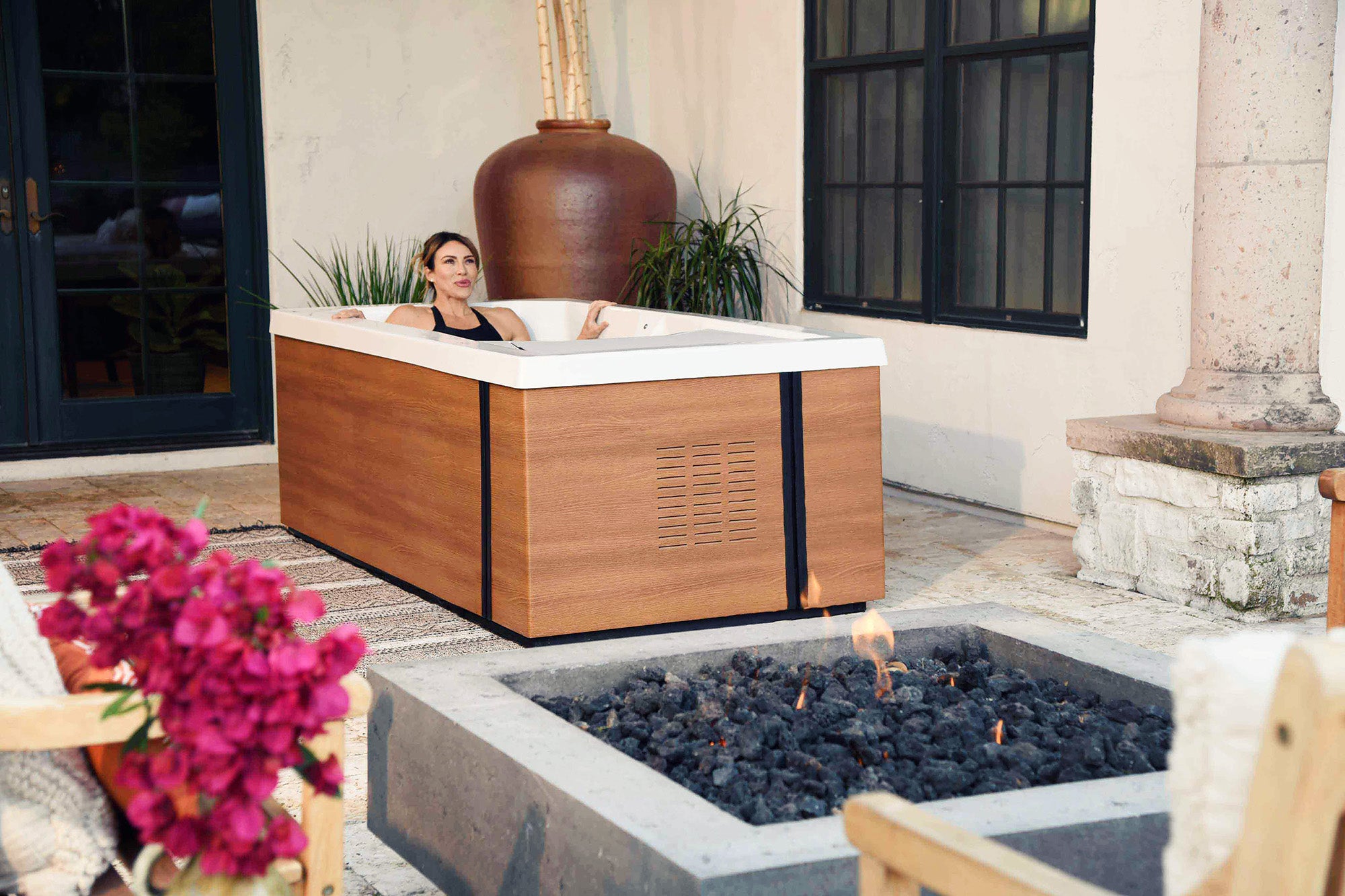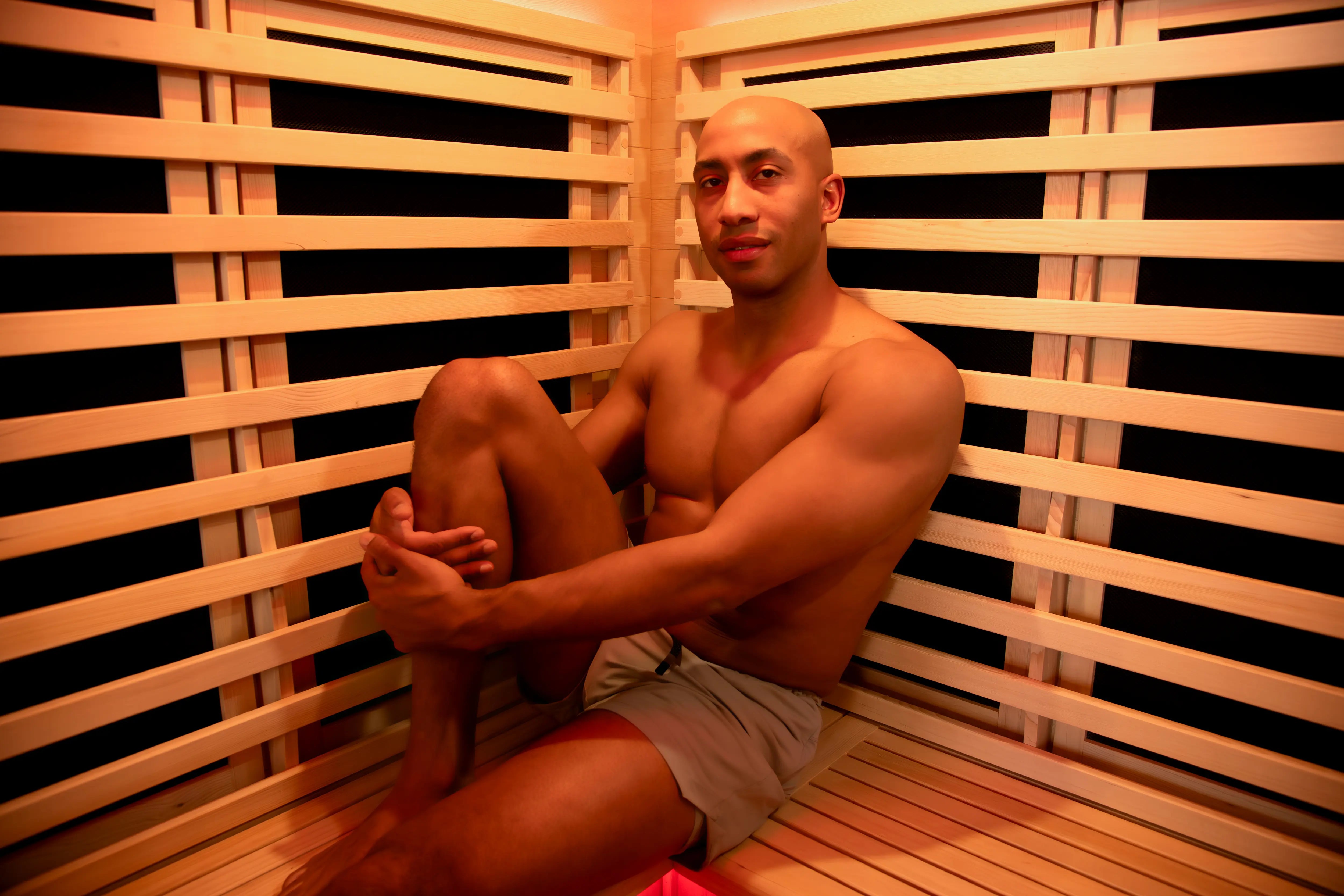Breath is an essential component of our daily lives, providing our bodies with the oxygen required for our organs to function properly. Inhale. Exhale. Your lungs fill with oxygen-rich air and that oxygen will soon be carried around your body via your bloodstream. And it’s something you don’t even know that you are doing. Like, right now. Inhale. Exhale. Just as you are reading this article.
But that autonomic response will change once you plunge into a cold lake or ice bath. When you first immerse yourself in cold water, your body's initial response is to take a deep breath in. Except that it might feel less like a breath and more like a gasp. Known as cold water shock, you might soon find that you're breathing faster and more shallowly. Even though you try, you just can’t seem to catch your breath.
But you can gain control of your breath and even use it to your advantage when practicing cold water immersion. Proponents of cold water therapy, like Dr. Susana Søberg and Wim Hof, incorporate breathing techniques into their teachings.
By using your breath to consciously control your nervous system, you can manage your stress response. This will help you enter a state of calm during your cold water therapy practice — whether you are soaking in a Michael Phelps Chilly GOAT Cold Tub by Master Spas or trying your first winter swim.

Breathing and your health
Breathing is a mechanical process. Your diaphragm drops, the muscles between your ribs contract. Air travels through your nose or mouth, trachea, and into your lungs.
Beyond the exchange of air (and oxygen) to sustain our organs, research has shown that the way we breathe can have a significant impact on our overall health and well-being. From reducing stress and anxiety to improving digestion and sleep quality, the way we breathe has been linked to a wide range of health benefits.
People have used mindful breathing exercises and breath control for millenia. Breathwork is rooted in Eastern cultures with the practice of yoga, Tai Chi, and Buddhism. In yoga, there are various ways of controlled breathing, each with different desired outcomes. Alternate nostril breathing can help you feel calmer, while Ujjayi or ocean’s breath is said to improve energy.
In the mid-20th century, there was a growing awareness of how breathing techniques could benefit your health. And as more and more people support holistic approaches to their health, the more that interest is piqued.
According to researchers, “Investigations into the physiological effects of slow breathing have uncovered significant effects on the respiratory, cardiovascular, cardiorespiratory and autonomic nervous systems.”
Findings show that breathing is associated with improved health and longevity.
Another study about breathing techniques reported that people breathe differently based on their emotional state. If you learn to follow the breathing patterns associated with those emotions, you can change how you are feeling. For example? If you recognize that you are feeling angry, you can begin “happy” breathing and you will start to feel the corresponding emotion.
With this in mind, it is becoming increasingly important to pay attention to our breathing habits and to explore the ways in which we can optimize our breath to promote optimal health and wellness.

Breathing techniques for cold water immersion
Cold water immersion and dips in an Michael Phelps Chilly GOAT Cold Tub are something you do to make your life better. Benefits include reduced inflammation, improved focus, better sleep, and promoting weight loss.
If the cold baths are supposed to be good, you certainly don’t want to gasp your way through them. Breathing techniques can help you achieve and maintain a sense of calm during your ice bath.
Bonus: As you use your breath to calm, you will start to associate those positive vibes with the cold tub. Those positive vibes will help you establish and maintain your ice bath routine.
Diaphragmatic breathing
The cold water immersion technique is a great way to reset your body and mind. It can help you de-stress, recover after exercise, or even get a better night's sleep.
Sometimes called "belly breathing," diaphragmatic breathing encourages full oxygen exchange. It can slow down the heart rate and lower your blood pressure. This breathing technique has been used by physicians to help patients with chronic conditions manage pain, improve concentration, strengthen the immune system, and decrease muscle tension.
Diaphragmatic breathing can be used to slow down and relax during stressful situations. To do it, simply breathe in through your nose for four counts, hold it for 2 seconds and slowly exhale through your mouth. You can repeat this cycle for several minutes before getting into the cold tub.
Deep breathing practice
Deep breathing is a simple yet effective way to calm down and reduce stress and anxiety. And, it can help alleviate any shortness of breath that you might feel when you first get into the Chilly GOAT cold tub.
To perform deep breathing exercises, place one hand on your chest and the other on your stomach as you relax in the cold tub. Try to make sure that both hands are in the water to maximize the benefits of cold therapy. Inhale deeply through your nose, focusing on expanding your belly rather than your chest, and then exhale slowly through your mouth, feeling your stomach contract. Try to make your exhale longer than your inhale to promote relaxation. Repeat this process as needed, allowing your body and mind to relax and unwind.
But you don’t have to limit deep breathing to just your cold tub. You can incorporate this practice into your daily life, using it anytime you need to calm down or reduce your stress levels.
Box breathing
Cold exposure enthusiasts often incorporate breathing techniques for more than just the calming effect. Intentional breathing can also help empty the lungs, allowing for more big breaths when you first get in the cold water. Having room in your lungs to take a big breath — or a couple big breaths — at the beginning of your plunge can help reduce the feeling of panic.
Many popular breathing techniques incorporate counting. Counting breaths can improve mindfulness and improve awareness. Otherwise, it’s easy to let your mind wander and return to a more automatic breathing pattern.
When you practice box breathing, you inhale for four seconds, pause for four seconds, exhale for four seconds, and pause for four seconds. You can use this method to slow down your breath and breathe more deeply while in the cold tub.
2-to-1 breathing
By focusing on the breath, you can bring a sense of calm and relaxation to the mind and body — even if you are soaking in water that is 52 degrees like Michael Phelps.
The 2-to-1 breathing can help soothe the nervous system and promote relaxation. The technique involves inhaling for a count of two, and then exhaling for a count of four. This creates a longer exhale than inhale, which can help activate the parasympathetic nervous system, also known as the "rest and digest" response. When this system is activated, the body can calm down, and heart rate and blood pressure can decrease. Think of this response as the opposite to the fight or flight reaction.
Your parasympathetic nervous system uses four of your cranial nerves, including the vagus nerve. Familiar with the vagus nerve? Among the benefits of cold water immersion and winter swimming is that they, too, stimulate the vagus nerve. When it comes to cold water therapy, stimulating the vagus nerve can slow the heart rate, relax the body, and activate metabolism.
Practice mindfulness
Mindfulness might not be a breathing technique on its own. However, it can help you heighten the positive feelings that come from intentional breathing. Mindfulness is about recognizing your emotions and what’s going on in your body.
When you are practicing deep breathing, especially in the cold plunge tub, you want to let go of your thoughts. Focus solely on the physical sensation of the breath and counting if it’s part of the technique.

How to buy a CHILLY Goat Cold Tub
Do you want to enjoy the benefits of cold water therapy without buying bag after bag of ice? Having a Michael Phelps Chilly GOAT Cold Tub allows you to realize the impact of cold water. Enjoy clean, clear, cold water on demand. You can click here to find out more about the benefits of incorporating a Michael Phelps Chilly GOAT cold tub into your routine. Start your journey today!






5 reasons not to try cold exposure
The vital role of recovery in athletic performance